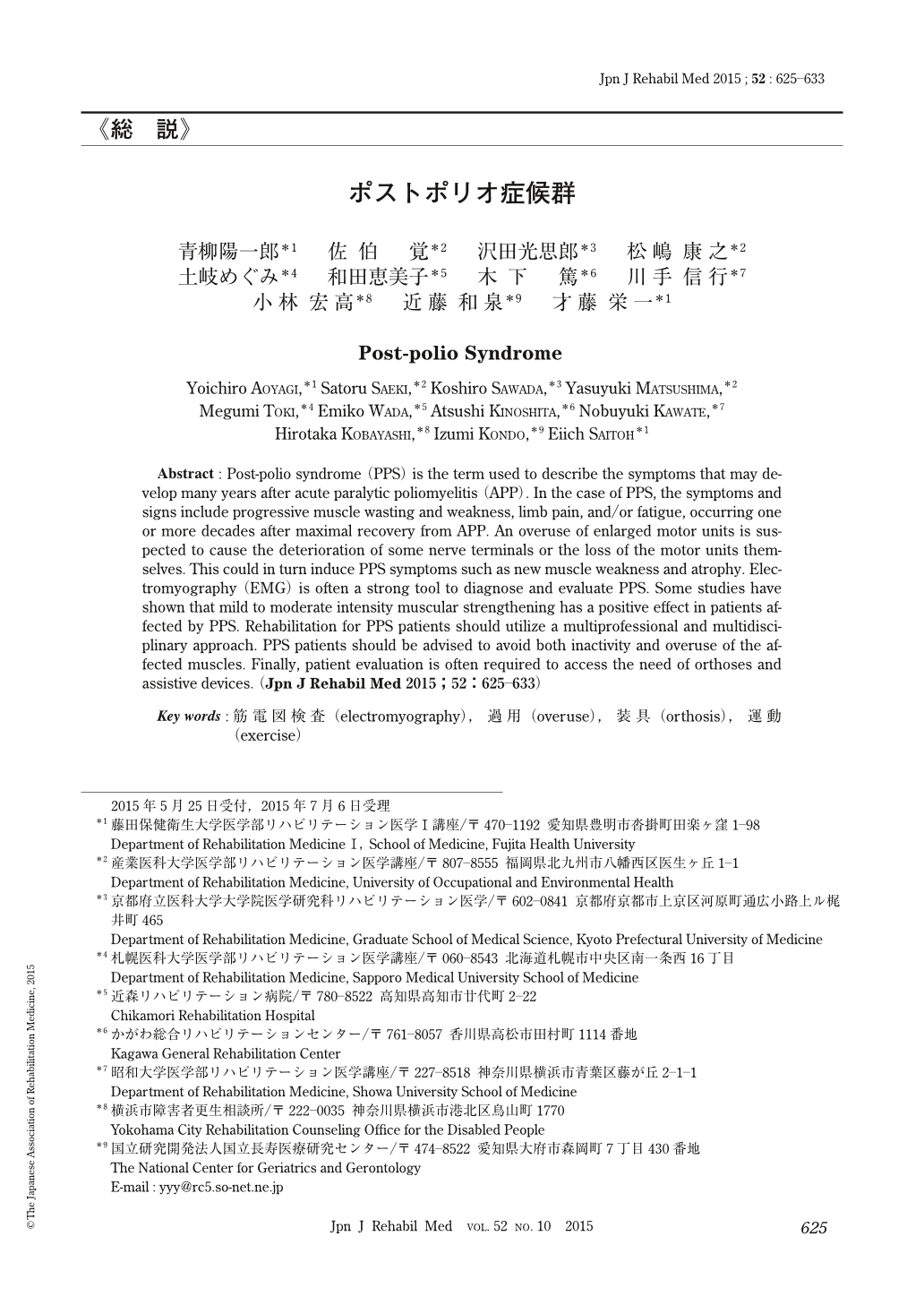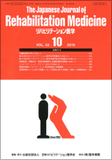Japanese
English
- 販売していません
- Abstract 文献概要
- 1ページ目 Look Inside
- 参考文献 Reference
はじめに
ポリオ(急性灰白髄炎)は,ポリオウイルスの中枢神経系への感染により引き起こされる急性ウイルス感染症である.わが国では1940年代の後半頃から1960年初頭にポリオが大流行した.1961年にワクチン接種が開始され,新規発生が激減しポリオの流行は終息した.
典型的な麻痺性ポリオでは,脊髄前角細胞の不可逆的な損傷により,四肢に様々な程度の弛緩性麻痺を呈する.下肢の発症が多く,麻痺は発症直後に最も重篤で,しばらくするとある程度まで回復し,その後安定した状態が続く.ポリオ経験者が,罹患後に年月を経て新たな筋力低下や筋萎縮を生じることは,以前より報告があった1〜3).ポリオ経験者が中高年になった1980年代より,易疲労性,筋力低下,痛みなどの新たな障害を生じることが問題となり,ポストポリオ症候群(post-polio syndrome,以下PPS)と呼ばれるようになった4,5).
わが国では1981年以降,野生株によるポリオ罹患者の報告は確認されていない6).その影響で昨今のわが国の医学教育カリキュラムからポリオがほぼ姿を消し,ポリオおよびPPSの診断経験のない医師が増えている.このような時代背景と幼少時にポリオに罹患して中高年になった多くのポリオ経験者に機能低下という問題が生じていることから,特にリハビリテーション(以下,リハ)科医はこのPPSの本態とその対応を知る必要がある.PPSは日本リハ医学会のシンポジウム等ではしばしば取り上げられるものの,一般的な社会的認知度は決して高くない.本学会誌では2003年にPPSの障害像とリハに関してレビューされたが7),その後10年以上が経過し,ポリオ経験者が高齢化した.その間,装具の軽量化などのテクノロジーの進歩や運動療法等に関する新たな知見が出てきている.本総説では,最近の国内外のPPSに関する疫学,診断,評価,運動療法,補装具に関して最近の知見を中心にレビューするとともに,障害管理や社会福祉サービスについても言及したい.なお本稿は,日本リハ医学会専門医会ポストポリオSpecial Interest Group(SIG)の活動の一環として,同SIGコアメンバーを中心に纏められた.
Abstract : Post-polio syndrome (PPS) is the term used to describe the symptoms that may develop many years after acute paralytic poliomyelitis (APP). In the case of PPS, the symptoms and signs include progressive muscle wasting and weakness, limb pain, and/or fatigue, occurring one or more decades after maximal recovery from APP. An overuse of enlarged motor units is suspected to cause the deterioration of some nerve terminals or the loss of the motor units themselves. This could in turn induce PPS symptoms such as new muscle weakness and atrophy. Electromyography (EMG) is often a strong tool to diagnose and evaluate PPS. Some studies have shown that mild to moderate intensity muscular strengthening has a positive effect in patients affected by PPS. Rehabilitation for PPS patients should utilize a multiprofessional and multidisciplinary approach. PPS patients should be advised to avoid both inactivity and overuse of the affected muscles. Finally, patient evaluation is often required to access the need of orthoses and assistive devices.

Copyright © 2015, The Japanese Association of Rehabilitation Medicine. All rights reserved.


